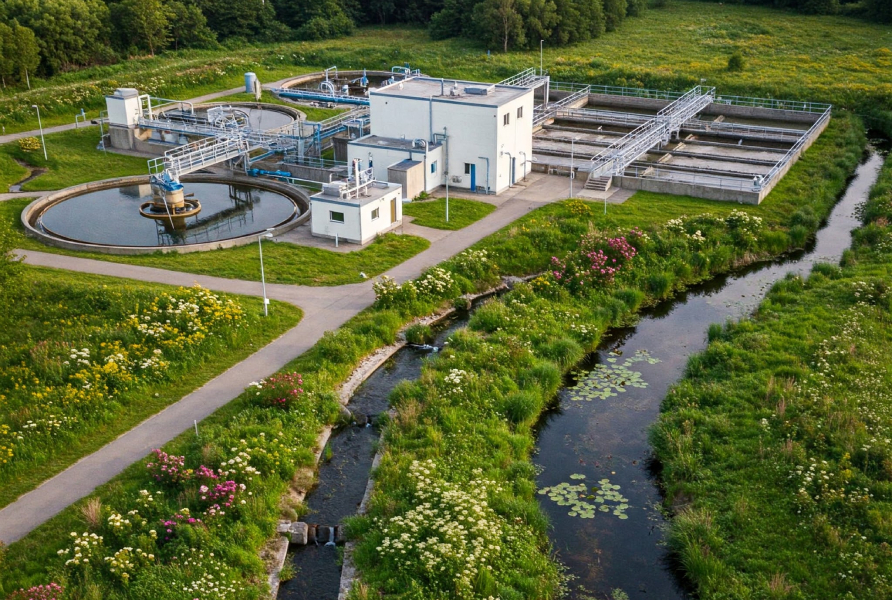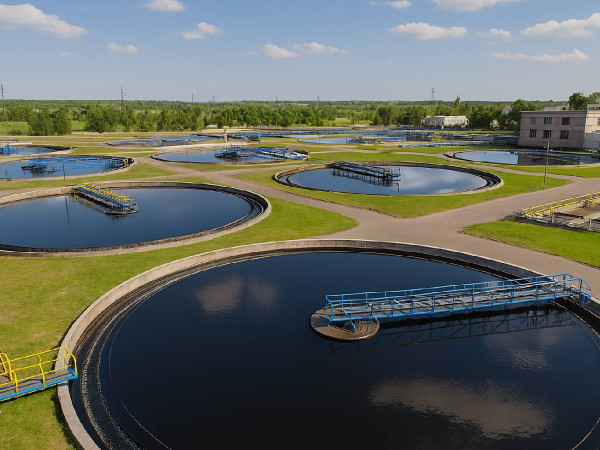News & Blogs
Green Technologies in Wastewater Treatment You Should Know About

Wastewater treatment is an essential process for protecting public health and the environment. Traditional methods, while effective, can be energy-intensive and generate their own waste streams. Fortunately, a wave of innovative "green technologies" is transforming how we manage wastewater, offering more sustainable and environmentally friendly solutions. As part of Civil Tech's commitment to highlighting advancements in civil engineering, this blog post will delve into some of the key green technologies in wastewater treatment that you should be aware of.
These technologies aim to minimize energy consumption, reduce chemical usage, recover valuable resources, and lower the overall environmental footprint of wastewater treatment plants. Let's explore some of the most promising approaches:
1. Constructed Wetlands:
Nature's own water purification systems! Constructed wetlands mimic the processes found in natural wetlands to treat wastewater. They consist of shallow basins planted with vegetation, where a complex interplay of physical, chemical, and biological processes removes pollutants.
- How it works: Plants and microorganisms in the wetland break down organic matter, filter out solids, and remove nutrients like nitrogen and phosphorus. The substrate (e.g., gravel, sand) provides a surface area for microbial growth and filtration.
- Benefits: Low energy consumption (relying on gravity and natural processes), cost-effective for smaller communities, provides habitat for wildlife, aesthetically pleasing.
- Considerations: Requires significant land area, treatment efficiency can be influenced by climate, may not be suitable for highly concentrated industrial wastewater without pre-treatment.
- Example: Many small towns and rural areas utilize constructed wetlands for treating domestic wastewater and agricultural runoff.
2. Membrane Bioreactors (MBRs):
MBRs integrate membrane filtration with biological treatment, typically using activated sludge. This combination results in a highly efficient and compact treatment system.
- How it works: Wastewater flows into an aeration tank where microorganisms break down organic pollutants. Instead of traditional sedimentation tanks for separating solids, MBRs use ultrafiltration or microfiltration membranes to physically separate the treated water from the sludge.
- Benefits: High-quality effluent (virtually free of suspended solids and bacteria), smaller footprint compared to conventional systems, potential for water reuse, reduced sludge production.
- Considerations: Higher initial cost, membrane fouling can be an issue requiring regular cleaning and maintenance, higher energy consumption compared to constructed wetlands (due to aeration and pumping).
- Example: MBRs are increasingly used in municipal wastewater treatment plants, especially where space is limited and high effluent quality is required for applications like irrigation or industrial reuse.
3. Anaerobic Digestion:
This process harnesses microorganisms to break down organic matter in the absence of oxygen, producing biogas (primarily methane and carbon dioxide) as a valuable energy source.
- How it works: Wastewater sludge or other organic waste is fed into a sealed reactor where anaerobic bacteria decompose it. The biogas produced can be used to generate heat and electricity, reducing the plant's energy dependence and greenhouse gas emissions. The remaining digestate can be used as a soil amendment.
- Benefits: Renewable energy production, reduction in sludge volume requiring disposal, potential for nutrient recovery from digestate.
- Considerations: Requires careful control of operating conditions (temperature, pH), biogas production can vary depending on the organic load, digestate may require further processing for certain applications.
- Example: Many large wastewater treatment plants utilize anaerobic digestion to treat sewage sludge, significantly reducing their energy costs and environmental impact.
4. Biofiltration:
Biofilters use layers of natural or synthetic media (e.g., sand, gravel, wood chips) to support the growth of microorganisms that remove pollutants from wastewater as it trickles through.
- How it works: Wastewater is applied to the top of the filter bed. As it flows downwards, a biofilm of microorganisms attached to the media surfaces degrades organic matter and other contaminants.
- Benefits: Relatively simple and cost-effective, low energy consumption, can be used for various pollutants (organic matter, nitrogen, phosphorus, odors).
- Considerations: Requires a suitable filter media, potential for clogging, treatment efficiency can depend on the flow rate and media characteristics.
- Example: Biofilters are used for treating municipal wastewater, stormwater runoff, and industrial wastewater, particularly for removing specific pollutants like ammonia or volatile organic compounds.
5. Algae-Based Treatment Systems:
Harnessing the power of microalgae for wastewater treatment is an emerging and promising green technology.
- How it works: Algae utilize sunlight and nutrients (like nitrogen and phosphorus) present in wastewater to grow through photosynthesis. During this process, they remove these pollutants from the water. The harvested algae biomass can then be used to produce biofuels, bioplastics, or animal feed.
- Benefits: Nutrient removal, potential for resource recovery (biofuel, bioplastics), carbon dioxide sequestration, can reduce the need for chemical fertilizers in algae cultivation.
- Considerations: Requires sufficient sunlight, land area, and control over algal growth conditions, harvesting algae biomass can be energy-intensive, technology is still under development for large-scale applications.
- Example: Pilot projects are exploring the use of algae ponds and photobioreactors for treating municipal and agricultural wastewater while producing valuable biomass.
The Future of Green Wastewater Treatment:
The field of green wastewater treatment is constantly evolving, with ongoing research and development focused on improving efficiency, reducing costs, and maximizing resource recovery. Innovations like advanced oxidation processes powered by renewable energy, smart monitoring systems for optimized operation, and integrated biorefineries that extract multiple valuable products from wastewater are paving the way for a more sustainable future in wastewater management.
As civil engineers and environmental stewards, staying informed about these green technologies is crucial. Integrating these innovative solutions into wastewater treatment infrastructure will not only protect our water resources but also contribute to a more circular and environmentally responsible society. Civil Tech will continue to monitor and report on advancements in this vital field, providing you with the latest insights and developments.



